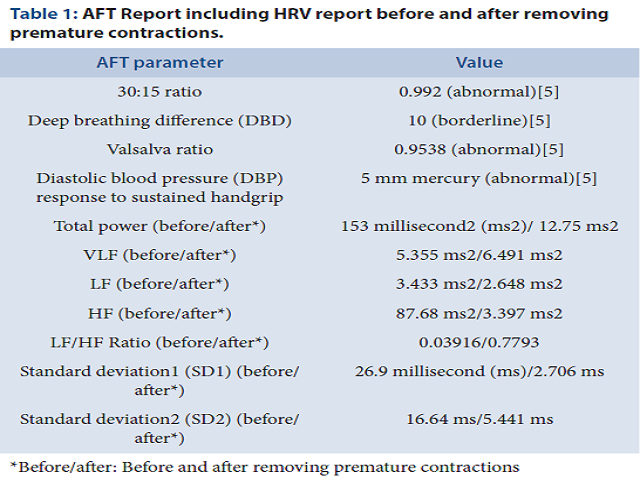Increased High Frequency Compared to Low Frequency Power in Heart Rate Variability in Parkinsonism
Abstract
Heart rate variability (HRV) decreases in Parkinson’s disease which could be a consequence of reduced motor activity besides being a marker of cardiovascular dysautonomia. The diurnal low frequency power and high frequency power decrease in advanced Parkinsonism. In this case, there is decreased low frequency (LF) but high frequency (HF) is found to be very high compared to LF, which needs explanation. Multiple lobed pattern on Poincare plot in this case increases SD1, which has an analogy to HF, therefore HF is increased. If we remove premature beats from the recording while analysing, and then frame Poincare plot, it would be a normal torpedo pattern and HF value will be decreased in this case like LF, as is normally found in Parkinsonism, which would truly reflect the HRV values due to autonomic effects. HRV report should be interpreted for autonomic dysfunction when Poincare plot is torpedo pattern as other patterns may signify some intrinsic disease of heart.






